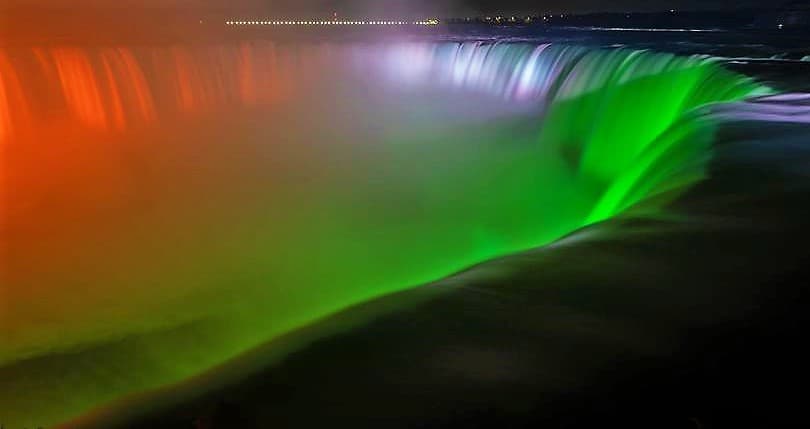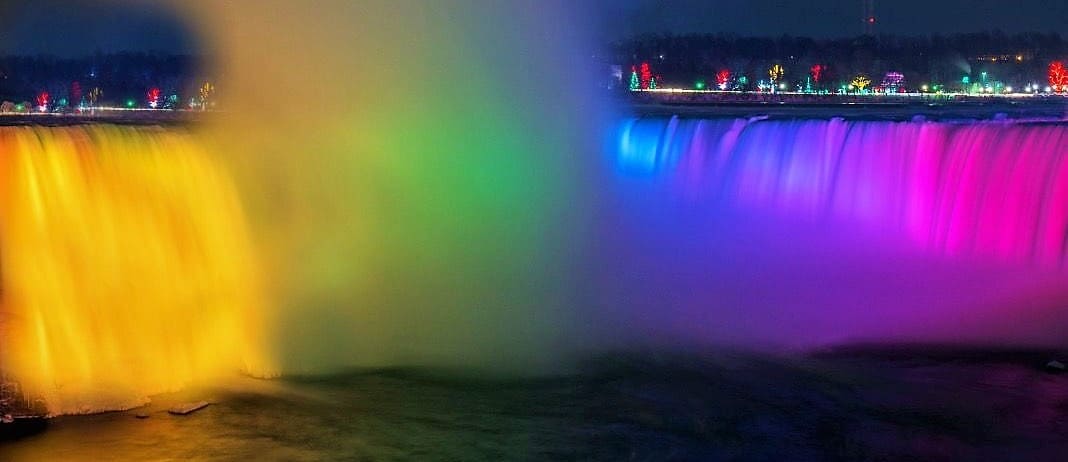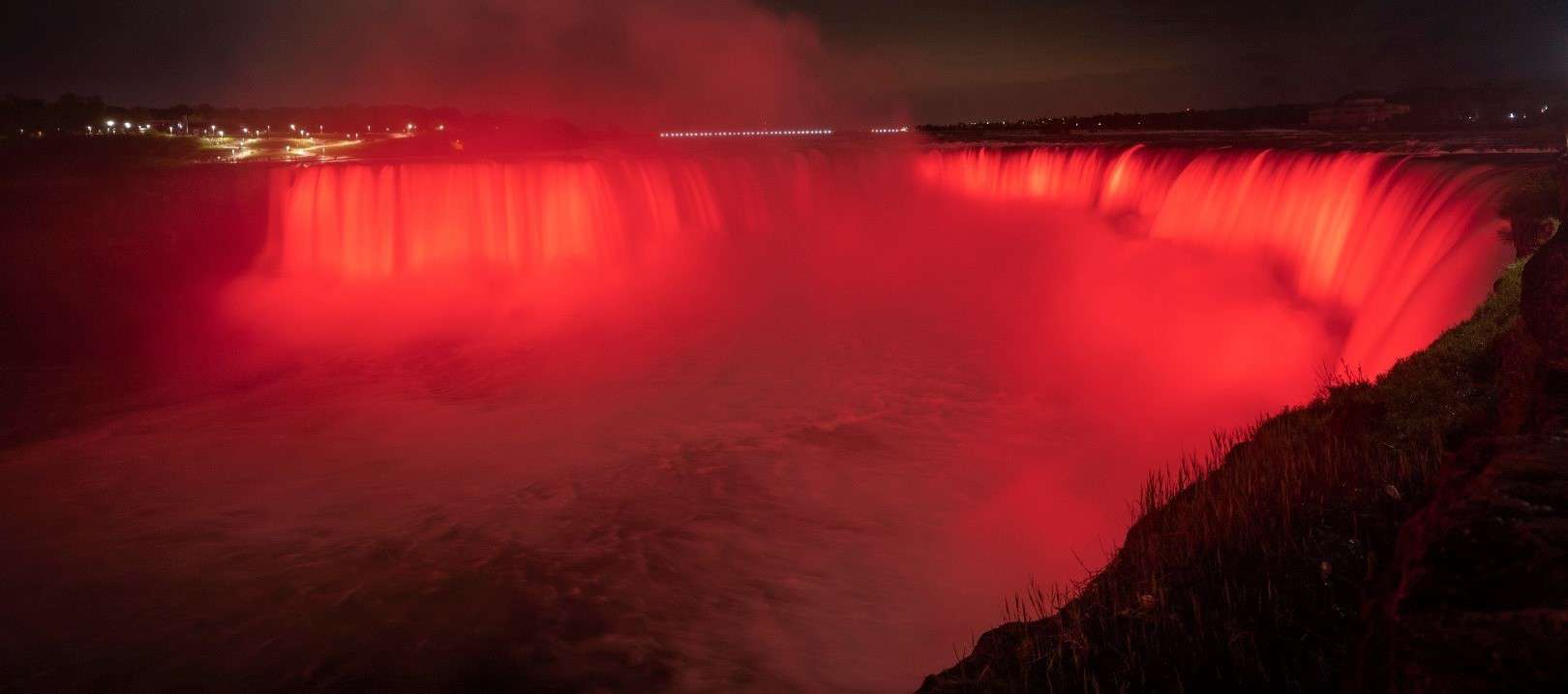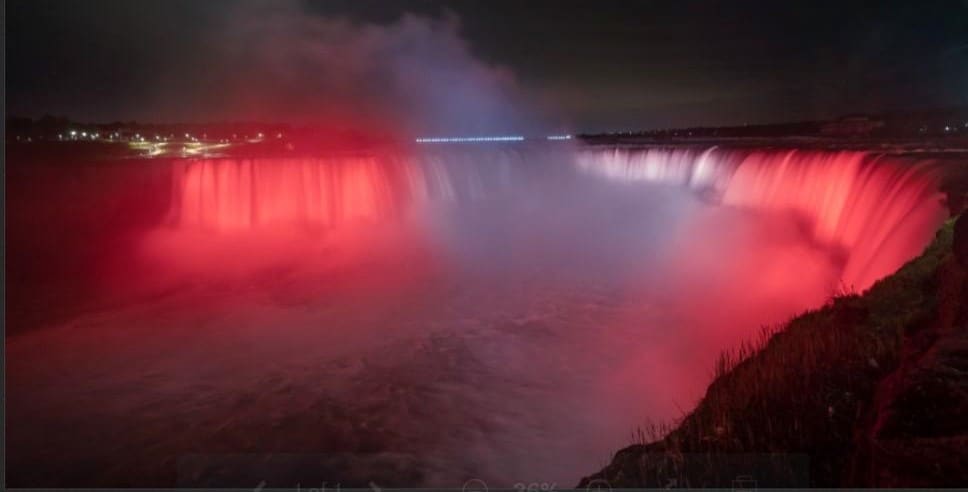Lighting up Niagara Falls actually dates as far back as 1860
Published May 12, 2022 at 11:05 am

While most would think this to be a more recent innovation, lighting up Niagara Falls actually dates back to 1860.
Back in the summer of 1860, a man named Blackwell from England wanted to light up the falls for the impending visit of the Prince of Wales, a title given to the oldest son of the King or Queen of England. In this case, it was Prince Andrew, the son of Queen Victoria.
To back-light the falls, he used 200 Bengal Lights, something akin to a flare, with 80 under the Horseshoe Falls behind the water on the Canadian side, another 60 on the Canadian shore aimed at the American Falls and the remaining under Table Rock, that piece of rock that juts out over the gorge.
And so at 10 pm on September 14, 1860, Niagara Falls was lit up successfully for the first time ever with the Prince of Wales looking on.

By 1879, electricity was used for the first time to illuminate the falls in honour of a royal visit of Princess Louise and her husband, the Marquis of Lorne – Governor General of Canada – as the Brush Electric Company of Cleveland, Ohio used arc lights to illuminate the American Falls.
In 1907, William D’Arcy Ryan of the General Electric Company of Schenectady, New York designed a new light system to illuminate the Falls.
The 36 new lights had the strength of over a billion candela (a unit of luminous intensity) were mounted along the Ontario Power Company access road immediately north of the Ontario Power Generating Station near the base of the gorge.
They were aimed at the American Falls and coloured gelatin film was placed in front of the light to project colours upon the American Falls.
In 1920, lights were installed on the roof of the Ontario Power Generating Station located at the base of the Niagara Gorge to light the American Falls. Additional lights were mounted on the Table Rock House to illuminate the Horseshoe Falls. All the lights were strategically located to conceal their location.
During the early 1920’s, a group of businessmen from Niagara Falls, New York formed a group that became known as the “generators.”

This group began lobbying officials of both American and Canadian Governments to improve the illumination of the Falls. The “generators” group had raised $58,000 for the purchase and installation of 24 new arc lights. Each light has a diameter measuring 91 cms (three feet).
By 1925, the Niagara Falls Illumination Board was formed, which an initial budget of $28,000 to ensure the management, operation and maintenance of the illumination lights. The power to supply the illumination lights were being provided for free by the Ontario Power Company.
Twenty-four new lights were mounted in a row on the Ontario Power Company water surge tank, located next to the Refractory (Victoria Park) Restaurant on the Canadian side allowing both the American Falls and Horseshoe Falls to be lit from the same location.
Each light used 4,500 watts and produced 54 million candela, while the series of lights produced 1.3 billion candela. These lights were originally built to search the sky for enemy aircraft over Britain during World War II.
The official ceremony took place on June 8th 1925 and was celebrated in an international ceremony in the middle of the Upper Steel Arch Bridge before the lights were turned on to illuminate the Falls with hundreds of spectators looking on. The costs were split 50/50 between the U.S. and Canadian sides.

In 1958, 20 new carbon arc lights were installed by the General Electric Company of Canada at a cost of $153,000. Ten lights were aimed at the Horseshoe Falls, five lights were focused on the American Falls and the remaining lights were either aimed at Goat Island or the Upper Rapids.
As part of a 1997 upgrade, work began to replace old illumination lights with a new 21 light system that will allow 60 to 70 per cent more illumination. At a cost of $150,000, the first 10 lights were replaced during that year, which use only 4,000 watts. After that five more lights were replaced while the remaining eleven lights were replaced in 1998.
Today, illumination of the Falls occurs every night throughout the year. This illumination project continues to be administered and funded by a five member International Board known as the Niagara Falls Illumination Board.
And the cost of lighting up the falls with the more efficient lights – roughly $85 per hour.
inNiagaraRegion's Editorial Standards and Policies




